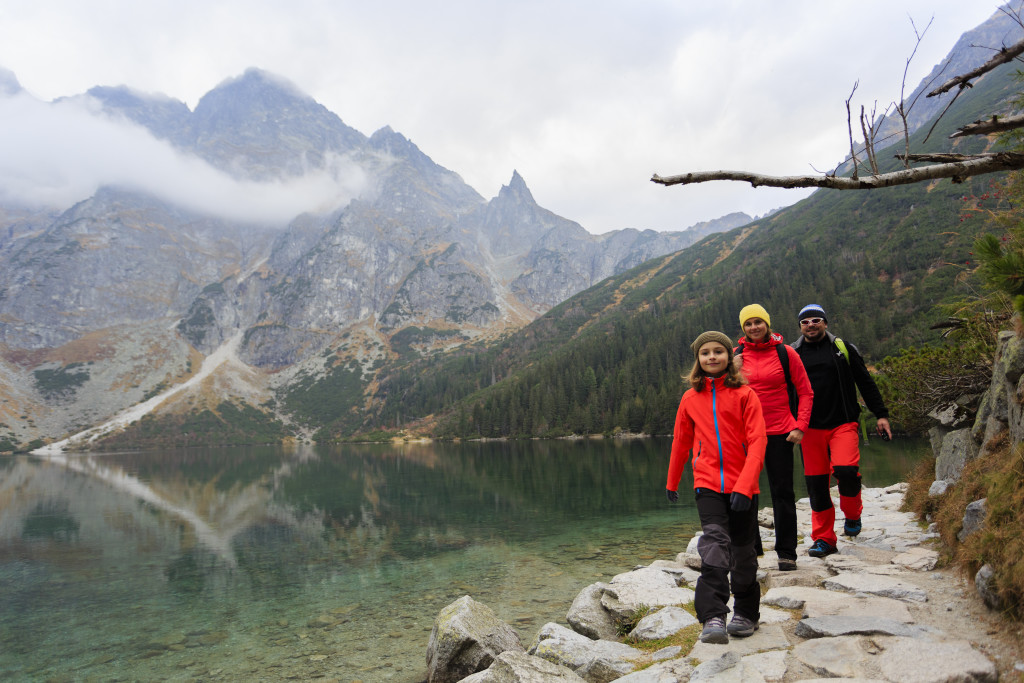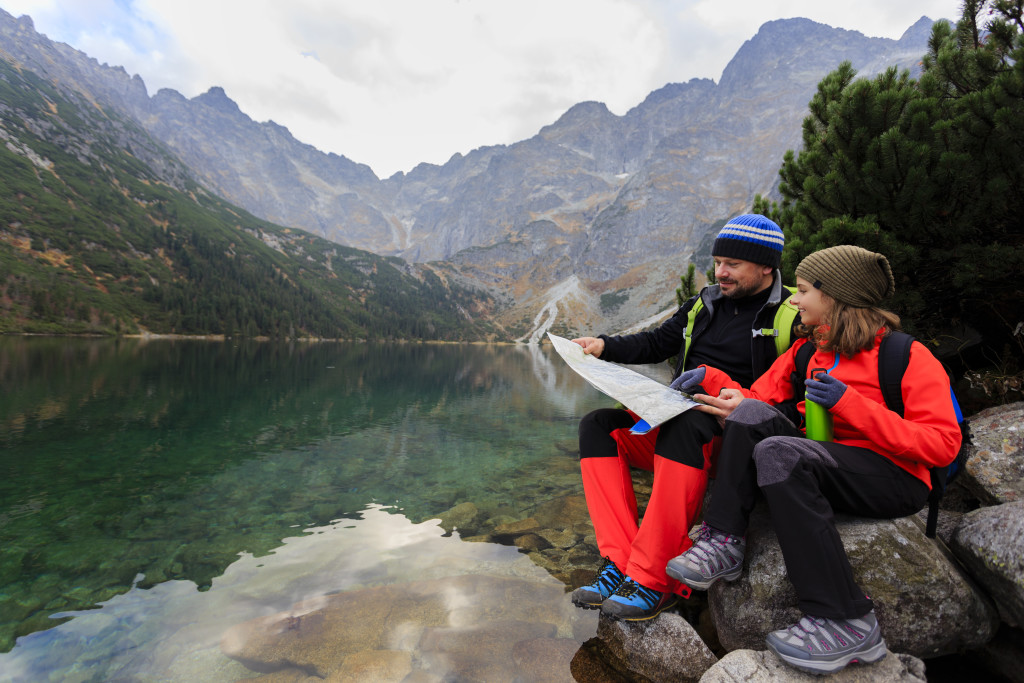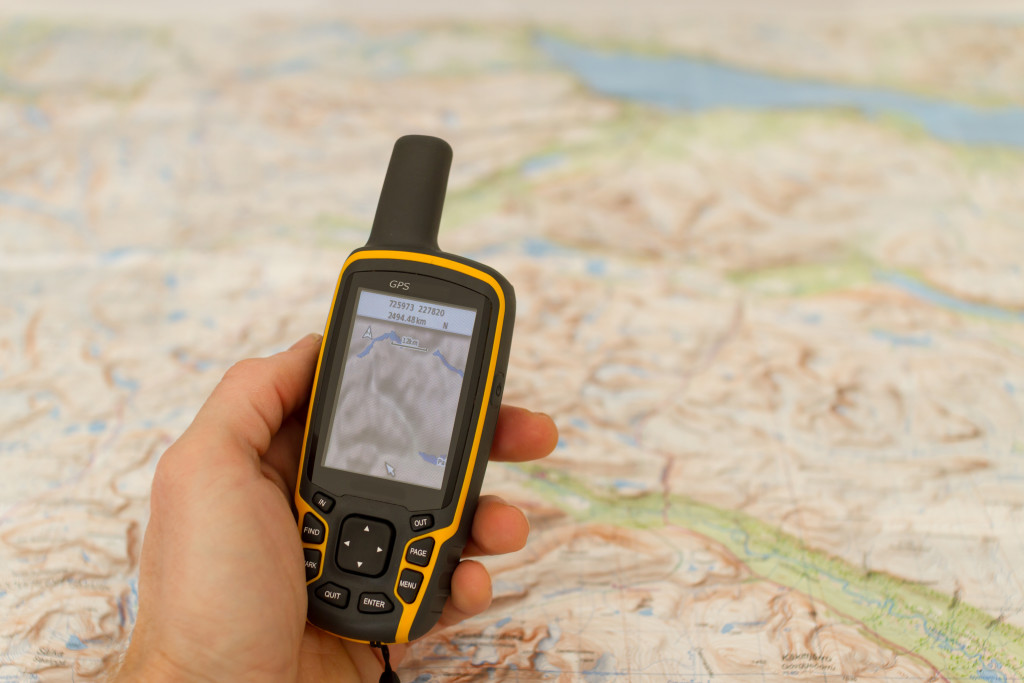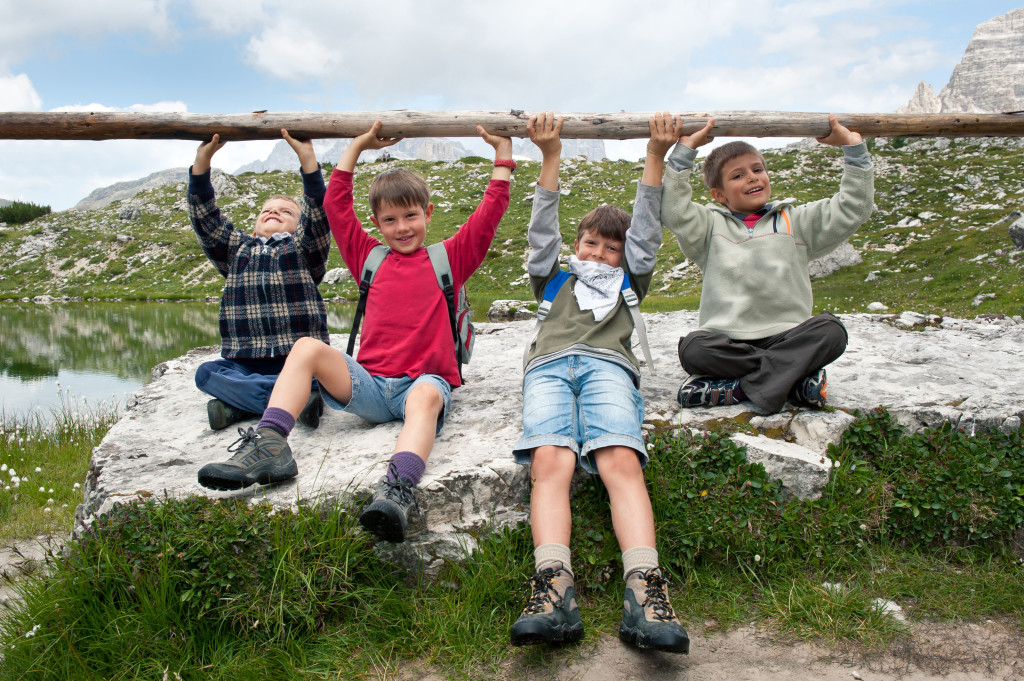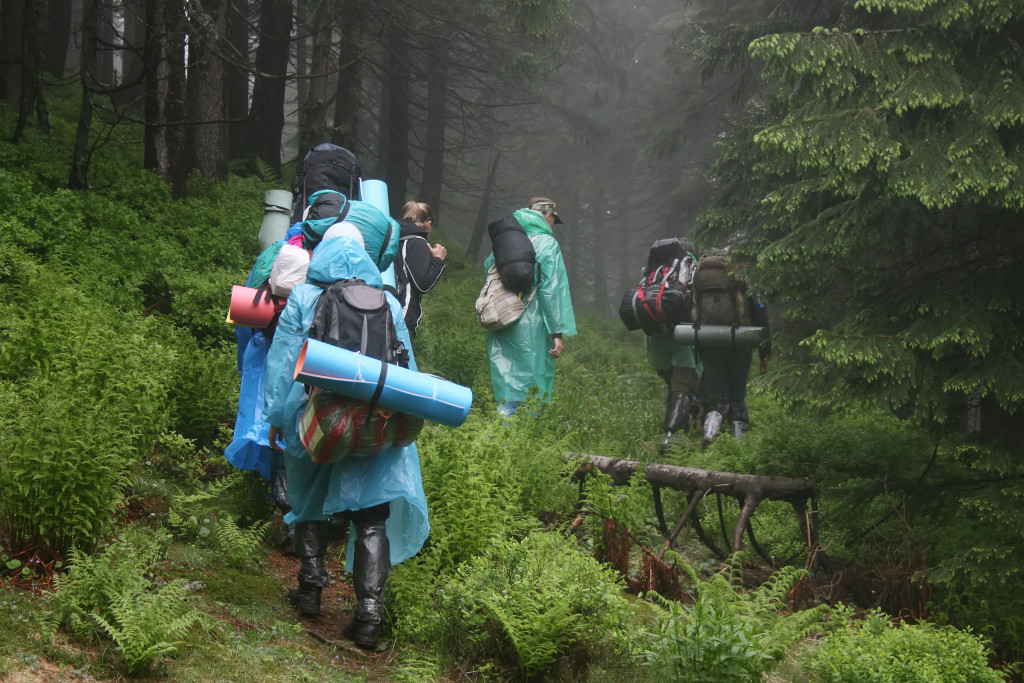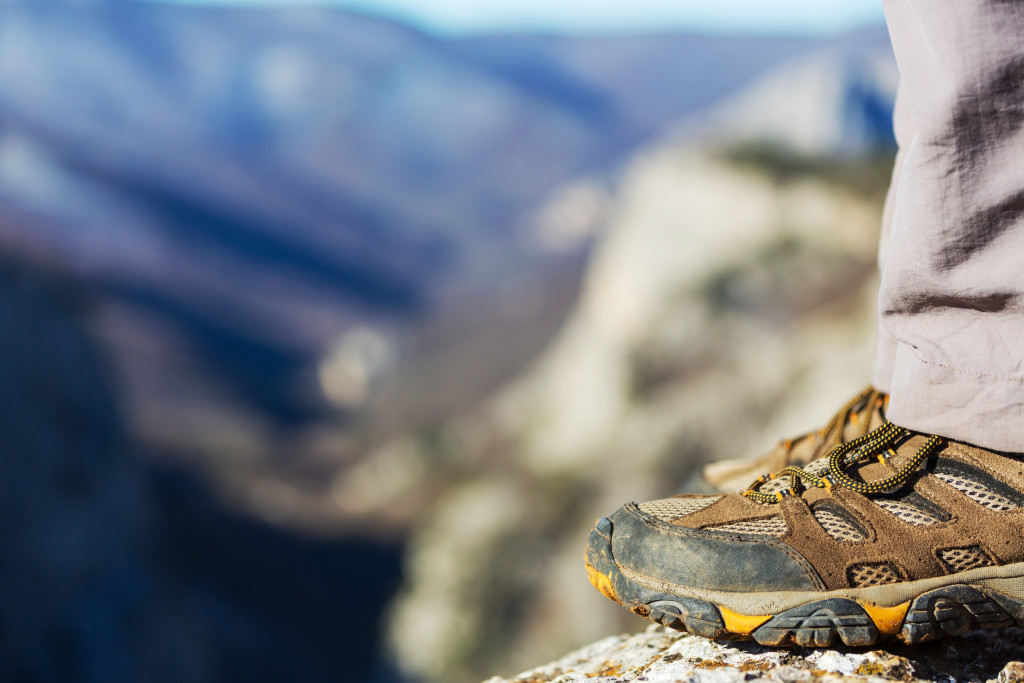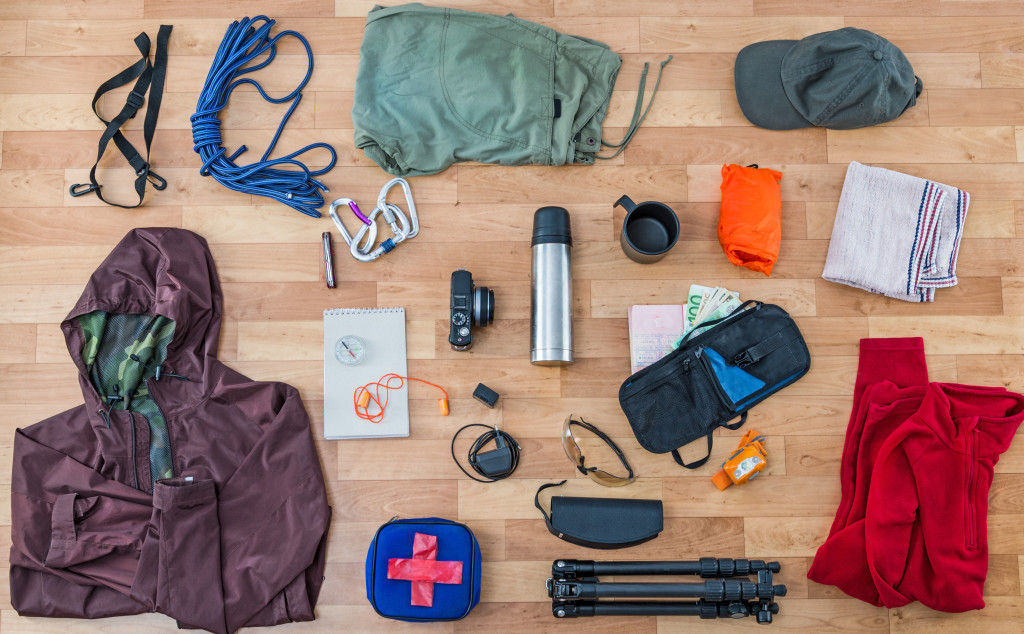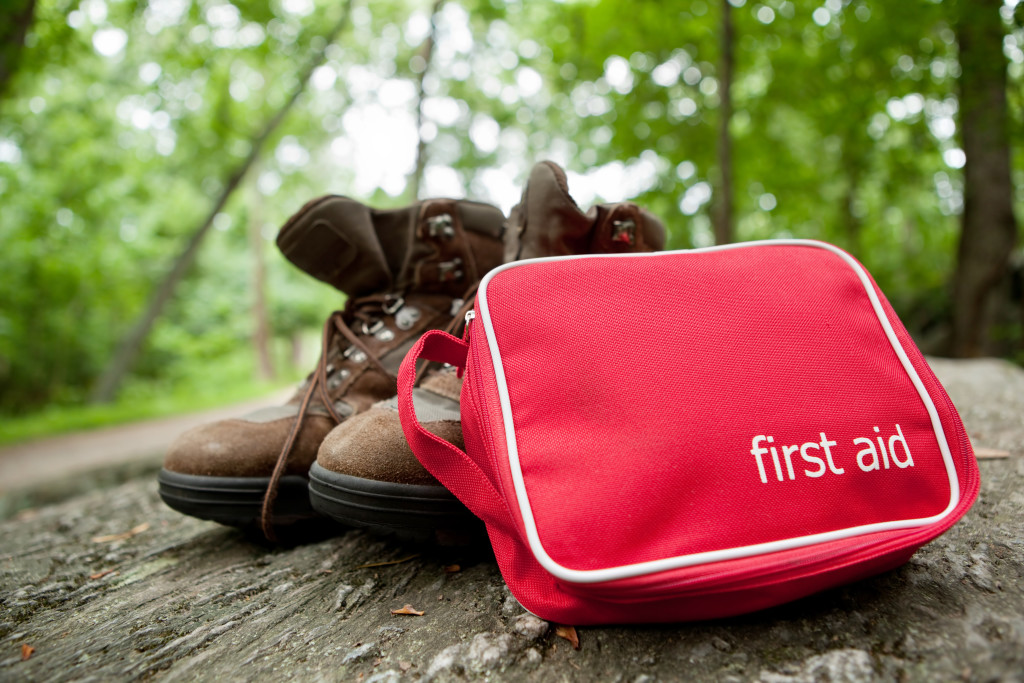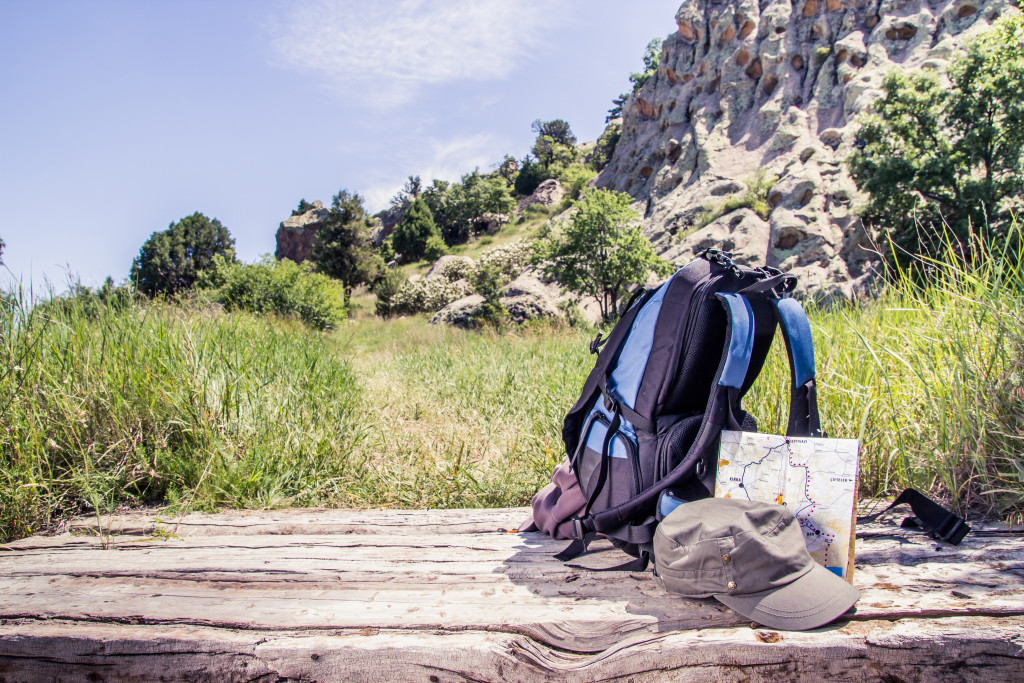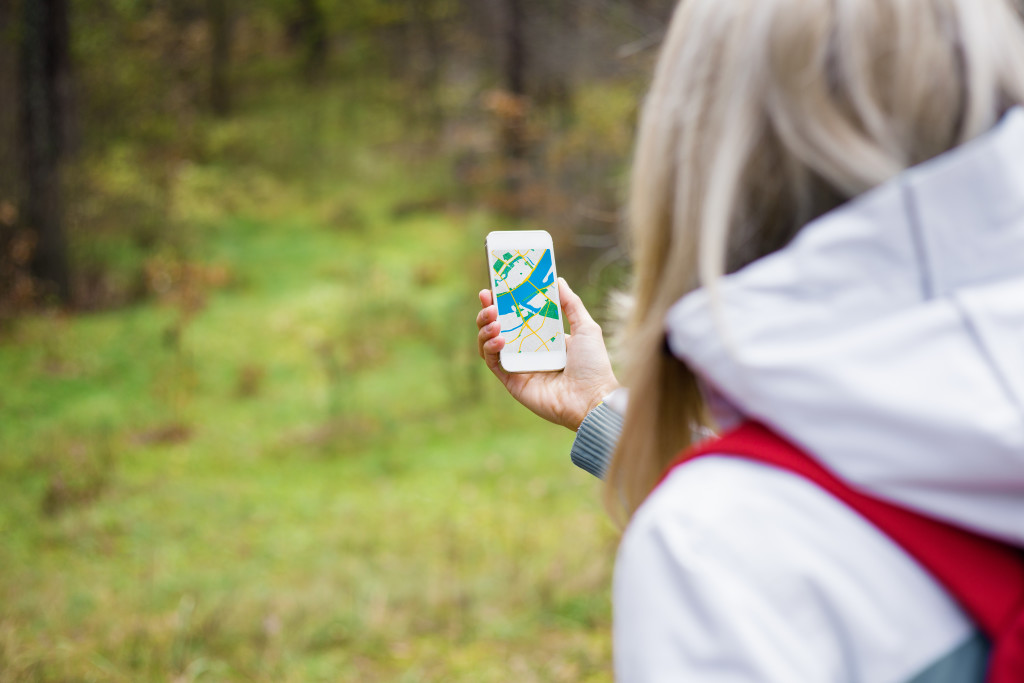Hiking is an incredible activity that the whole family can enjoy together.
Getting started can be a little bit intimidating for beginners, but by taking the time to plan in advance and following these simple guidelines, you can ensure a safe and memorable trip for every hiker in your group.
1. Plan Your Route
2. Know Your Navigation
- How to Read a Topographic Map
- How to Read a Map & Contour Lines (video)
- 3 Easy Ways to Use a Compass
3. Take Time for Breaks
Remember to figure in time for breaks, especially if your hiking party includes kids or less experienced hikers. You’ll reach your destination more quickly by taking a few minutes to rest every 20-30 minutes than you will if you try to push through exhaustion without any breaks! While you’re taking a few minutes to rest, you can play games to keep the whole family engaged and tuned in to their surroundings. Any time you stop on a trail is a great time to practice identifying plants or to take photos. Don’t be afraid to let your creativity out while you’re enjoying the nature around you!
Be sure to consider any physical limits that might affect the hikers in your group. Children and beginners need to go at a slower pace and take more breaks. Consider the distance of your hike, any elevation changes you’ll be encountering and other terrain that might be an issue (like water you’ll be crossing). Anything that might be more physically demanding should be taken into account when planning for your route as well as the time your hike will take. Hiking is a physical activity, but it shouldn’t be exhausting. Pay attention to everyone in your group and watch closely for signs of exhaustion. If one hiker in a group is struggling, they probably won’t speak up because they don’t want to feel like they’re holding the rest of the group back. If any of your hikers looks in need of a break, go ahead and take one!
Clubs and guided walks can be a great way for beginners to gain some experience and stamina.
4. Check the Forecast
Keep an eye on weather forecasts in the days leading up to your hike. Of course, when it comes down to it, a weather forecast is little more than an educated guess. Once you’re out on the trail you need to know how to read the weather by paying attention to your surroundings and reading the cues that nature might give you.
If your route will take you near (or through) water, pay particular attention to signs of impending rain. In certain types of terrain (like mountains) it’s possible for the weather to take a sudden and unexpected turn, so be prepared and have a plan in place for this possibility.
Don’t be afraid to turn around and go back if the weather becomes troublesome. If your group will consist of kids, beginners or even four-legged companions, it’s best to plan your hikes during clear weather and err on the side of caution if things get rough. Safety should always be your top priority!
5. Be Good to Your Feet
Your feet are the vehicle that will carry you on your hike, so ensuring your comfort with the right footwear is absolutely vital. There are many considerations to take into account when choosing the best boots (or shoes) and socks for your hiking needs. The links below have lots of great detailed information that will help you select the right options for your own individual needs.
Your hiking boots or shoes should ideally be purchased from a specialty outdoor retailer in person—not online—so that you can try them on and get a feel for them before you buy. It’s also a good idea to spend a couple of weeks breaking in new footwear before you embark on a long and strenuous hike. Spend a little time wearing them when you run errands or even just around the house so you won’t be breaking them in on an actual hike. Nothing can detract from the beauty of nature like the pain of a new and uncomfortable pair of shoes!
6. Pack Light
Be sure to bring everything you need, but pack as little as possible. There’s an certain kind of art and skill to packing for a hike; extra food and layers of clothing plus first aid and basic safety supplies are a must. The links below offer some great information on how o pack everything you need without packing so much that you compromise your comfort level.
7. Basic First Aid
Always carry a first aid kit on any hike, no matter how short (or easy) you intend for it to be! Keep up-to-date on your basic first aid skills. You never know when you might need them!
8. Know Hiking Etiquette
Good hikers mind their manners! Be aware of basic hiking etiquette and follow it. Good hikers respect nature; great hikers respect other hikers as well.
9. Backcountry Hygiene
Plants and wildlife are integral parts of hiking. Whether you’re eating outdoors, washing up during longer hikes or taking care not to leave any waste behind that will entice the wildlife it’s important to take some basic precautions. Watching for wildlife is exciting, but it can also be dangerous without taking the proper precautions. Familiarize yourself and the other hikers in your group to ensure that you don’t have any unwanted run-ins with dangerous bacteria or the local wildlife in your hiking area!
10. Know What to do if You Get Lost
Getting lost is a very real possibility in many different types of hiking environments. If you do get lost, take a breath and don’t panic! Visit the links below during the planning phase of your hike for some great tips that will help you keep things on track if you get lost:
- If Lost When Hiking
- Tips to Avoid Getting Lost – And What to do When You Are
- 9 Things to do if You Get Lost on a Hike
11. Track Your Trip
There are many different ways that you might choose to track your hike. You can use a timer or stopwatch to track the time, wear a pedometer to count your steps, take photos or even simply record your start and stop times. Tracking the various details of a hike can be a fun activity for the whole family to participate in, which each member of your group taking on a particular method. At the end of your hike, you can come together to record all of the details. If you do this after each hike you take, you’ll soon have a keepsake of memories and stats that you can look back on over the years.
There are also practical reasons for keeping track of the time you spend on a hike. Spending too much time in the heat or inclement weather can be dangerous and you should always take care not to over-exert older hikers, youngsters or even your furry four-legged hiking companions.
12. Know the 10 Essentials
These 10 hiking essentials are vital for a happy (and safe) hike:
1. Appropriate footwear
2. Map & compass/GPS
3. Extra water & a way to purify it
4. Extra food
5. Rain gear & extra clothing
6. Safety items: fire, light & a whistle
7. First aid kit
8. Knife or multi-purpose tool
9. Sun screen & sun glasses
10. Daypack/backpack
Visit the American Hiking Society for more detailed information, including a printer-friendly version of this list of hiking essentials.
As you plan for your hike, take the time to educate yourself so you can be prepared. By doing so, you’ll ensure the safety of yourself and everyone else in your hiking group. You’ll also be giving yourself the freedom to truly enjoy the wonder of the world that surrounds you.
